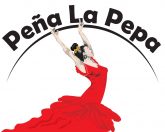
Royal Street in the French Quarter (Photo: Justen Williams)
To know more about New Orleans and why things are the way they are here, it is worth exploring the historical connections between Spain and New Orleans from the colonial period. For example, did you know there are street signs with Spanish names are all over New Orleans? The picture shown here, is one of the many street names such as Calle Real (Royal Street) in the French Quarter. The culture, history and music of Louisiana documents without a doubt the Spanish era of New Orleans.
Introduction Essay: Excerpt One
by Alfred E. Lemmon
director of the Williams Research Center
from the program for “New Orleans and the Spanish World,” a THNOC-LPO concert
In the wake of Christopher Columbus’s voyage to the New World, the Treaty of Tordesillas divided the non-European world between the two Iberian naval superpowers—Spain and Portugal. With a stroke of a pen on June 7, 1494, whatwould eventually become Louisiana was declared Spanish. The first Europeans known to visit Louisiana were Alonso Álvarez de Pineda, who traversed the Gulf Coast in 1519, and Hernando de Soto, whose party explored the lower Mississippi River valley from 1539 to 1543. The land was largely ignored by Spain for 140 years, and as a result, in 1682 René-Robert Cavelier, sieur de La Salle, claimed the territory for France. Louisiana’s distance from France and its other New World claims made trade and travel difficult. In contrast, the proximity and the extent of Spanish provinces in the Western hemisphere—including Havana, Merida, Veracruz, and Spain’s holdings in Florida—meant that the young French colony was surrounded by Spanish influence, resulting in close ties between Louisiana and the Spanish New World. Once the colony was transferred from France to Spain, in 1762, authorities in Havana and Mexico City oversaw the colony’s operations, further cementing Louisiana’s connections to the wider Spanish New World.
This period proved to be formative in the development of the Louisiana settlement. Recognizing the need to populate the colony in order to protect it against French and British interests, Spain encouraged the immigration of Canary Islanders, Malagueños—natives of Málaga, Spain—and displaced Acadians. Arts and culture also saw a boom during the decades of Spanish rule. Louisiana’s first newspaper appeared in 1794, and its first opera was performed two years later. (The fact that both the newspaper, Le Moniteur de la Louisiane, and the opera, Sylvain, were French testifies to the colony’s linguistic multivalence.) Individual Spanish artists had long been entwined with European colonization efforts—the Spanish painter Miguel García, for instance, was a member of Jean-Baptiste Le Moyne, sieur de Bienville’s 1699 party—but by the late eighteenth century, New Orleans was large enough to support a small community of artists, including Joseph Furcoty, Joseph Herrera, and José de Salazar. Indeed, the city’s growth may be credited in large part to the Spanish philanthropist Andrés Almonester y Roxas. The construction of the Royal Hospital (1783), the Leper’s Hospital (1785), and the church of the Ursuline nuns (1787) was mere prelude to his buildings that have come to define New Orleans: the Presbytère, the parish church of St. Louis, and the Cabildo. Together with the apartment complex of his daughter, the Baroness Pontalba, these buildings form one of the most well-known civic centers in the United States.
